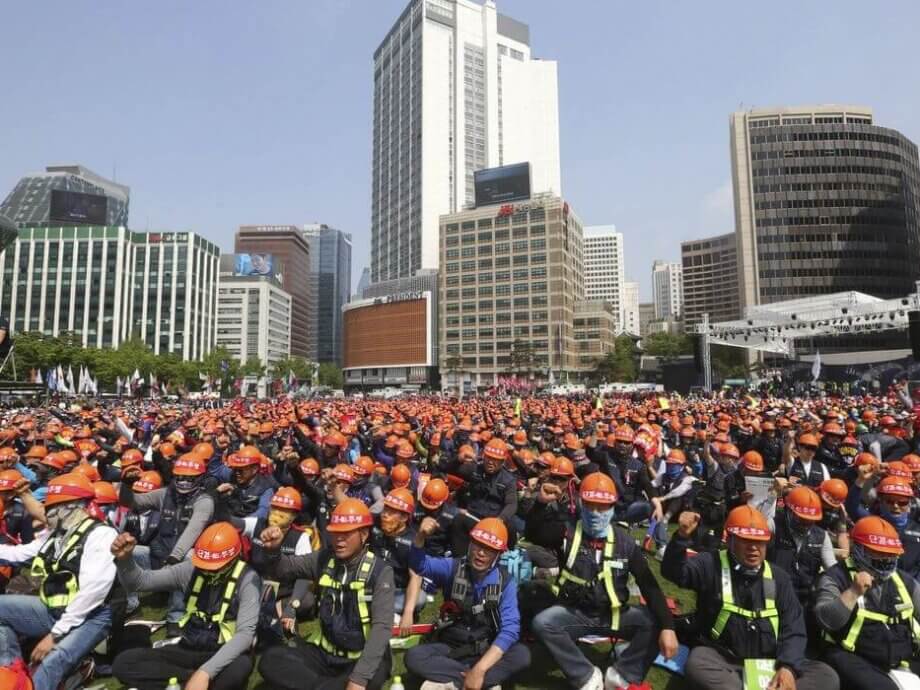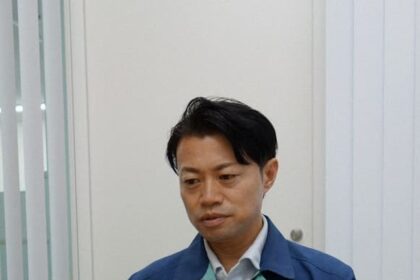Introduction: A Nation at a Crossroads
South Korea, long known for its relentless work ethic and marathon office hours, is now at the center of a heated national debate: should the country move to a 4.5-day workweek? With President Lee Jae-myung’s campaign pledge to reduce the standard workweek from 40 to 36 hours, the proposal has ignited hopes for a better work-life balance among workers, while raising deep concerns among business leaders and economists about its feasibility and economic impact.
- Introduction: A Nation at a Crossroads
- Why the 4.5-Day Workweek? The Push for Change
- Political Promises and Policy Proposals
- Business Backlash: Productivity and Economic Concerns
- Labor Unions and Worker Advocacy
- Real-World Experiments: Companies and Local Governments Lead the Way
- International Comparisons: Lessons and Limitations
- Structural Challenges: Productivity, Inequality, and the Dual Labor Market
- What Would It Take? Conditions for Success
- Broader Implications: Social, Economic, and Cultural Impact
- In Summary
The issue is not just about hours on the clock. It touches on South Korea’s economic model, generational values, labor market structure, and the country’s ability to adapt to global trends in work and productivity. As the government, businesses, and workers grapple with the implications, the outcome of this debate could reshape the future of work in one of Asia’s most dynamic economies.
Why the 4.5-Day Workweek? The Push for Change
For many South Koreans, the idea of a shorter workweek is more than a policy proposal—it’s a long-awaited relief. Surveys consistently show overwhelming support: a 2024 poll by business networking platform Remember found that 70% of salaried workers would prefer a four-day workweek, and a Saramin survey reported that 86.7% of employees favored the idea, with over 60% willing to accept lower pay for fewer hours.
Workers like Kim Ji-eun, a 39-year-old office employee in Seoul, express a common sentiment:
“Right now, I leave work exhausted every Friday evening and have barely enough time to rest, let alone enjoy life or take care of my kids. Just half a day more would mean a real chance at balance.”
This groundswell of support is driven by South Korea’s notoriously long working hours. In 2022, the average South Korean worked 1,901 hours—149 hours more than the OECD average. The country’s culture of overwork has even given rise to the term gwarosa, or “death from overwork.” Burnout remains widespread, especially among younger workers, who are increasingly vocal about the need for change.
Generational attitudes are shifting. The so-called “MZ generation” (Millennials and Gen Z) is less willing to sacrifice personal well-being for economic success, pushing for reforms that prioritize work-life balance and mental health. As Dale Whelehan, CEO of 4 Day Week Global, observes:
“This younger generation is rejecting the trade-off their parents and grandparents were often forced to make: sacrificing wellbeing, health, and personal fulfillment for the sake of economic success.”
Political Promises and Policy Proposals
The 4.5-day workweek has become a central issue in South Korea’s political landscape. Both major parties—the liberal Democratic Party (DP) and the conservative People Power Party (PPP)—have included versions of the policy in their platforms, though with significant differences in approach.
- Democratic Party (DP): Proposes reducing the legal workweek from 40 to 36 hours, with no pay cut, and aims to bring Korea’s average annual working hours below the OECD average by 2030. The DP envisions a phased transition, with strong government support for companies that adopt the new schedule, and ultimately a move toward a four-day workweek.
- People Power Party (PPP): Suggests a “flexible” 4.5-day workweek, where employees work an extra hour Monday through Thursday and take a half-day on Friday, keeping total weekly hours at 40. The PPP argues that such changes should be left to the discretion of individual businesses, not mandated by law.
President Lee Jae-myung has emphasized that any transition will be gradual and based on dialogue with stakeholders. He has also pledged to review the controversial “inclusive wage system” (which often leads to unpaid overtime), expand vacation support, and provide incentives for companies adopting the new schedule.
Business Backlash: Productivity and Economic Concerns
Despite popular support, the business community is deeply skeptical. South Korea’s labor productivity remains low by international standards. According to the Korea Labor Institute, the country ranked 33rd out of 38 OECD nations in 2023, with hourly productivity at $44.4—just 57% of the U.S. level and 65% of Germany’s.
Employers worry that reducing work hours without a corresponding boost in productivity will increase labor costs and hurt competitiveness, especially for small and medium-sized enterprises (SMEs). Sohn Kyung-shik, chairman of the Korea Employers Federation, warns:
“Some pioneering firms might adopt a four-day or 4.5-day workweek to attract talent. But for many companies, this change would be a serious strain.”
SMEs, which make up the backbone of the Korean economy, are particularly concerned. Many already struggle to meet deadlines under the current 52-hour workweek (40 hours plus up to 12 hours of overtime). A small auto parts manufacturer with 50 employees explained:
“We will have to either cut order volumes or hire more staff to finish work within the reduced hours. The former hampers growth, while the latter increases labor costs.”
According to the Korea Federation of SMEs, 42.4% of small businesses report difficulties with the current system, citing labor shortages, unpredictable orders, and increased costs as major challenges. Business leaders argue that a one-size-fits-all mandate could deepen the divide between large corporations (which can absorb higher costs) and smaller firms (which cannot).
Labor Unions and Worker Advocacy
On the other side, labor unions and worker advocates are strong supporters of the 4.5-day workweek. The Federation of Korean Trade Unions and the Korean Confederation of Trade Unions have both endorsed the policy, citing the urgent need to address long working hours and improve quality of life.
Unions point to successful pilot programs in countries like Iceland, France, the UK, and the US, where reduced workweeks have led to higher job satisfaction and, in some cases, increased productivity. They argue that advances in automation, artificial intelligence, and platform-based labor models make it possible to rethink traditional work schedules.
The unions also highlight the social benefits of shorter workweeks, including higher birth rates, improved mental health, and a more dynamic domestic economy. As one union statement put it:
“If work is changing, then the standard of what we consider acceptable labor hours must also evolve.”
Real-World Experiments: Companies and Local Governments Lead the Way
While national legislation remains under debate, several major companies and local governments in South Korea are already experimenting with reduced workweeks and flexible schedules.
- POSCO: The steel giant has introduced a biweekly four-day workweek for office workers, allowing employees to work longer hours on some days in exchange for a Friday off every two weeks, while maintaining a 40-hour workweek.
- Samsung Electronics: Since June 2023, employees can take a four-day workweek once a month if they meet their required hours. The policy, agreed upon during salary negotiations, aims to boost morale and attract talent.
- SK Group: SK Telecom and SK hynix offer similar options, with employees eligible for a Friday off every two weeks or once a month, depending on hours worked.
- Gyeonggi Province: The local government has launched a pilot program offering subsidies to 83 companies that adopt flexible schedules, including a biweekly four-day week, a 35-hour week, or a half-day every Friday. About half of the participating companies have fewer than 40 employees, showing that even small firms are interested—if given support.
These pilots provide valuable data and practical models for broader implementation. Kim Jong-jin, director of the Korea Worker Institute and Union Center, notes that the transition from a six-day to a five-day workweek in the early 2000s took four years, suggesting that a similar timeline may be needed for the next step.
International Comparisons: Lessons and Limitations
South Korea is not alone in rethinking the workweek. Several countries have piloted or adopted shorter workweeks, with mixed results:
- Iceland: A public sector trial of a four-day workweek without pay cuts led to improved well-being and maintained or increased productivity. However, Iceland’s small population and unique economic structure limit direct comparisons.
- United Arab Emirates (UAE): In 2022, the UAE adopted a 4.5-day workweek for federal employees, with positive feedback but in a context of high oil wealth and a different labor market.
- Belgium, UK, Japan, New Zealand: These countries have conducted trials or offered flexible options, often with participation dropping if wage reductions are involved.
Experts caution that while international examples are encouraging, South Korea’s unique labor market—characterized by a sharp divide between secure, permanent jobs and unstable, non-regular employment—poses special challenges. The country’s service sector, in particular, lags in productivity, making a blanket reduction in hours risky without broader reforms.
Structural Challenges: Productivity, Inequality, and the Dual Labor Market
Underlying the debate are deep structural issues in South Korea’s economy. The labor market is highly segmented, with large corporations and the public sector offering secure, well-paid jobs, while small businesses and service industries rely on low-paid, unstable work. This “dual structure” means that reforms benefiting one group may worsen inequality for others.
Labor productivity is another sticking point. While manufacturing productivity exceeds the OECD average, the service sector’s value-added productivity is only 64% of the OECD average. Without improvements, reducing work hours could lead to lower incomes and job insecurity for many workers, especially in services.
Kim Seong-hee, a labor professor at Korea University, explains:
“Shaped by decades of regulations that prioritize employment stability over labor market agility, rigid legal frameworks and cultural norms make it difficult for companies to reward excellence or address underperformance. This makes it risky for businesses to experiment with reduced work hours.”
Experts agree that any move toward a 4.5-day workweek must be accompanied by comprehensive labor reform, including measures to boost productivity, support SMEs, and address the needs of non-regular and platform-based workers.
What Would It Take? Conditions for Success
Most analysts believe that a successful transition to a 4.5-day workweek in South Korea will require:
- Phased Implementation: Gradual rollout, starting with pilot programs and voluntary adoption, especially in sectors and companies best positioned to adapt.
- Productivity Gains: Investment in automation, digitalization, and training to ensure that output does not fall as hours are reduced.
- Flexible Arrangements: Allowing companies and workers to tailor schedules to their needs, rather than imposing a rigid national standard.
- Government Support: Subsidies, tax credits, and other incentives for SMEs and vulnerable sectors to offset costs and encourage innovation.
- Labor Market Reform: Addressing the dual structure, improving job security for non-regular workers, and updating legal frameworks to support flexibility and fairness.
Park Ji-soon, a labor expert at Korea University, advises:
“From redesigning work environments and staffing plans to ensuring fair compensation levels, the private sector must begin preparing for structural transformation.”
Broader Implications: Social, Economic, and Cultural Impact
The debate over the 4.5-day workweek is about more than just hours and pay. It reflects a broader shift in South Korean society, as younger generations demand a new balance between work and life, and as the country seeks to remain competitive in a rapidly changing global economy.
Proponents argue that shorter workweeks could help address pressing challenges such as low birth rates, mental health crises, and sluggish domestic demand. Critics warn of unintended consequences, including higher costs, reduced competitiveness, and greater inequality if reforms are not carefully designed.
Ultimately, the outcome will depend on the willingness of all stakeholders—government, business, labor, and civil society—to engage in honest dialogue, experiment with new models, and adapt to changing realities.
In Summary
- South Korea’s 4.5-day workweek proposal has strong public support, especially among younger workers seeking better work-life balance.
- Political parties differ on implementation: the Democratic Party favors a legal reduction in hours, while the People Power Party prefers flexible, company-led approaches.
- Business leaders and SMEs are concerned about low productivity, higher costs, and the risk of deepening inequality.
- Labor unions and advocates see the policy as essential for social progress and point to international examples of success.
- Pilot programs by major companies and local governments offer practical models, but national rollout will require phased implementation and government support.
- Structural challenges—especially the dual labor market and low service sector productivity—must be addressed for reforms to succeed.
- The debate reflects broader social and economic shifts, with the potential to reshape South Korea’s future of work.












